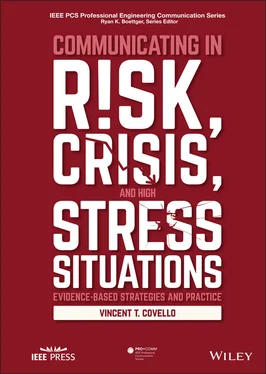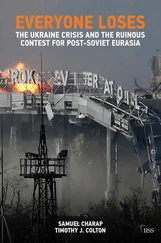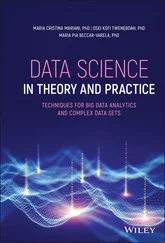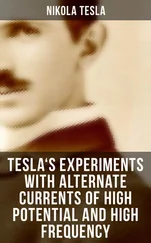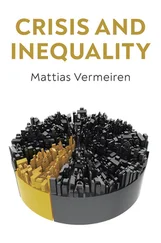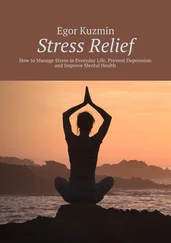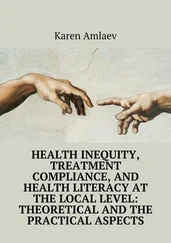Researchers also hypothesized that risk comparisons might become counterproductive if the public suspects that they are used to minimize or magnify a problem. 12 I provide several examples of risk comparison studies below.
Food risk comparisons. To gain perceptive and improved understanding of the risks posed by food, numerous studies have compared the risks posed by different foods, food products, and food additives. 13 One of the earliest and best‐known comparative analyses of the risks of this type were the studies on food risks, diet, and cancer by Professor Bruce Ames and his colleagues at the University of California, Berkeley. These studies compared the cancer risks of foods that contain synthetic chemicals (e.g., food additives and pesticide residues) with the risks of natural foods. An important conclusion of the research was that synthetic chemicals represent only a tiny fraction of the total carcinogens in foods. The researchers pointed out that natural foods are not necessarily benign. Large numbers of potent carcinogens (e.g., aflatoxin in peanuts) and other toxins are present in foods that contain no synthetic chemicals. Natural carcinogens are part of a plant’s natural defense system. Human dietary intake of these natural carcinogens can be as much as 10,000 times greater than the dietary intake of potentially carcinogenic synthetic chemicals in food. However, the many natural anticarcinogens also in food provide partial protection against natural carcinogens in food.
Critics of the work of Ames and his colleagues have argued that his risk estimates are inflated. Critics have also argued against the implicit, and sometimes explicit, argument and risk communication that natural carcinogens in foods deserve greater societal and regulatory attention and concern than synthetic chemicals. 14
Energy risk comparisons. One of the earliest and the best‐known studies of energy technologies was a study conducted by Inhaber (1978) for the Atomic Energy Control Board of Canada. 15 The study compared the total occupational and public health risks of different energy sources for the complete energy production cycle – from the extraction of raw materials to energy end use. The study examined the risks of eleven methods of generating electricity: coal, oil, nuclear, natural gas, hydroelectricity, wind, methanol, solar space heating, solar thermal, solar photovoltaic, and ocean thermal. Two types of risk data were analyzed: data on public health risks from industrial sources or pollutants and data on occupational risks derived from statistics on injuries, deaths, and illnesses among workers. Alternative sources of energy were compared on the basis of the calculated number of person‐days that would be lost per megawatt year of electricity produced. Total risk for the energy source was calculated by summing the risks for the seven components of the complete energy production cycle: materials acquisition and construction, emissions from materials acquisition and energy production, operation and maintenance, energy backup system, energy storage system, transportation, and waste management.
Inhaber’s report came to the following conclusions:
Most of the risk from coal and oil energy sources is due to toxic air emissions arising from energy production, operation, and maintenance.
Most of the risk from natural gas and ocean thermal energy sources is due to materials acquisition.
Most of the risk from nuclear energy sources is due to materials acquisitions and waste disposal.
Most of the risks from wind, solar thermal, and solar energy sources arise from the large volume of construction materials required for these technologies and the risks associated with energy backup systems and energy storage systems.
The most controversial aspect of Inhaber’s report was the widely communicated conclusion that nuclear power carries only slightly greater risk than natural gas and less risk than all other energy technologies. Inhaber reported, for example, that coal‐based energy has a 50‐fold larger worker death rate than nuclear power. The report also communicated that, contrary to popular opinion, (1) nonconventional energy sources, such as solar power and wind, pose substantial risks; and (2) the risks of nuclear power are significantly lower than those of nonconventional energy sources.
Inhaber’s report can be criticized from several perspectives. For example, the study mixed risks of different types, used risk estimators of dubious validity, made questionable assumptions to cover data gaps, failed to consider future technological developments, made arithmetic errors, and double‐counted labor and backup energy requirements. Perhaps the most important criticism of Inhaber’s study was methodological inconsistencies. For example, while the study considered materials acquisition, component fabrication, and plant construction in the analysis of unconventional energy sources and of hydropower, the study did not follow the same approach for coal, nuclear power, oil, and gas. Furthermore, the labor figures for coal, oil, gas, and nuclear power included only on‐site construction, while those for the renewable energy sources included on‐site construction, materials acquisition, and component manufacture.
Despite these criticisms, Inhaber’s research represented a landmark effort in the literature on risk communication and risk comparisons. It made a significant conceptual contribution by attempting to compare, and communicate, the risks of alternative technologies intended to serve the same purpose. Also important was Inhaber’s observation that risks occur at each stage in processes and product development, from raw material extraction, manufacturing, and use, to disposal. Inhaber’s central argument was that risks from each stage in an industrial process or in product development need to be calculated and communicated to achieve an accurate estimate and understanding of the total risk.
Cancer risk comparisons.Doll and Peto (1981) conducted one of the earliest and best‐known studies to put cancer risks in perspective. 16 The research team analyzed data for a variety of causes of cancer, including industrial products, pollution, food additives, tobacco, alcohol, and diet. Results of the study provided a comparative perspective on cancer risks. The study found, for example, that the combined effect of food additives, occupational exposures to toxic agents, air and water pollution, and industrial products account for only about 7% of US cancer deaths.
The results suggested that removing all pollutants and additives in the air, water, food, and the workplace would result in only a small decrease in cancer mortality. However, Doll and Peto pointed out that even this small percentage represents a substantial number of lives. Doll and Peto also pointed out that associations and correlations, no matter how powerful or large, do not mean causation. Only when all other available information is brought into the picture can a true causal relationship be shown.
EPA’s “Unfinished Business” Risk Comparison Study.In 1987, the EPA published a landmark study of the risks associated with the thirty‐one risk problems regulated by the agency titled Unfinished Business: A Comparative Assessment of Environmental Problems . 17 The purpose of the study was to determine if the agency could be more effective in its risk decision‐making and management activities.
EPA staff were assigned to four working groups: the Cancer Risk Working Group, the Non‐Cancer Health Effects Working Group, the Ecological Effects Working Group, and the Welfare Effects Working Group. Each working group looked at the same set of 31 risk problems and attempted to estimate the risks for each in their assigned areas. The results were then integrated to provide a basis for comparing the seriousness of the different risk problems. Risk problems that received relatively high rankings in three of the four working group categories, or at least medium rankings in all four, included outdoor air pollutants (for example, carbon monoxide, nitrogen oxides, and sulfur dioxide), stratospheric ozone depletion, and pesticide risks, including residues on food.
Читать дальше
